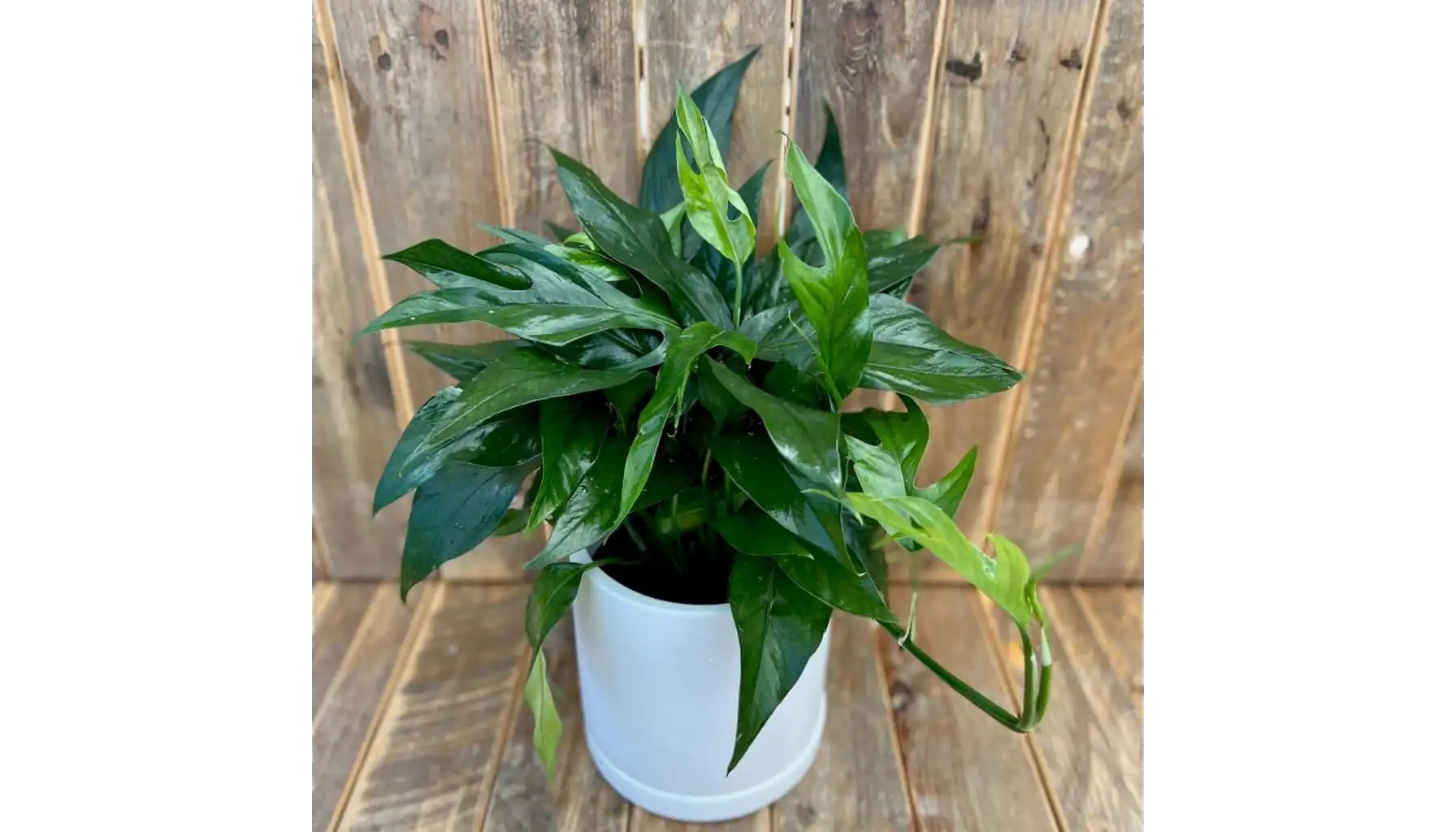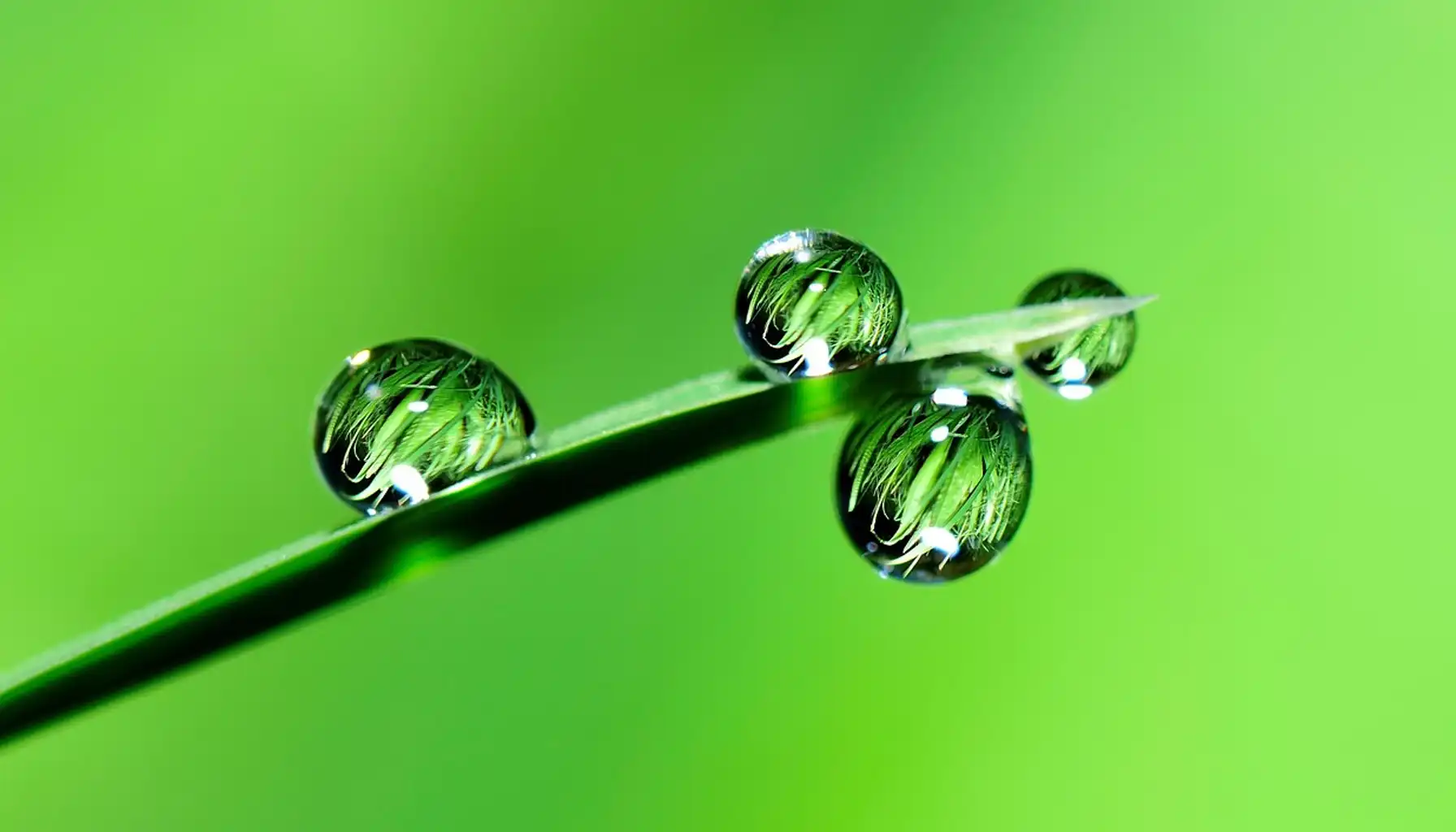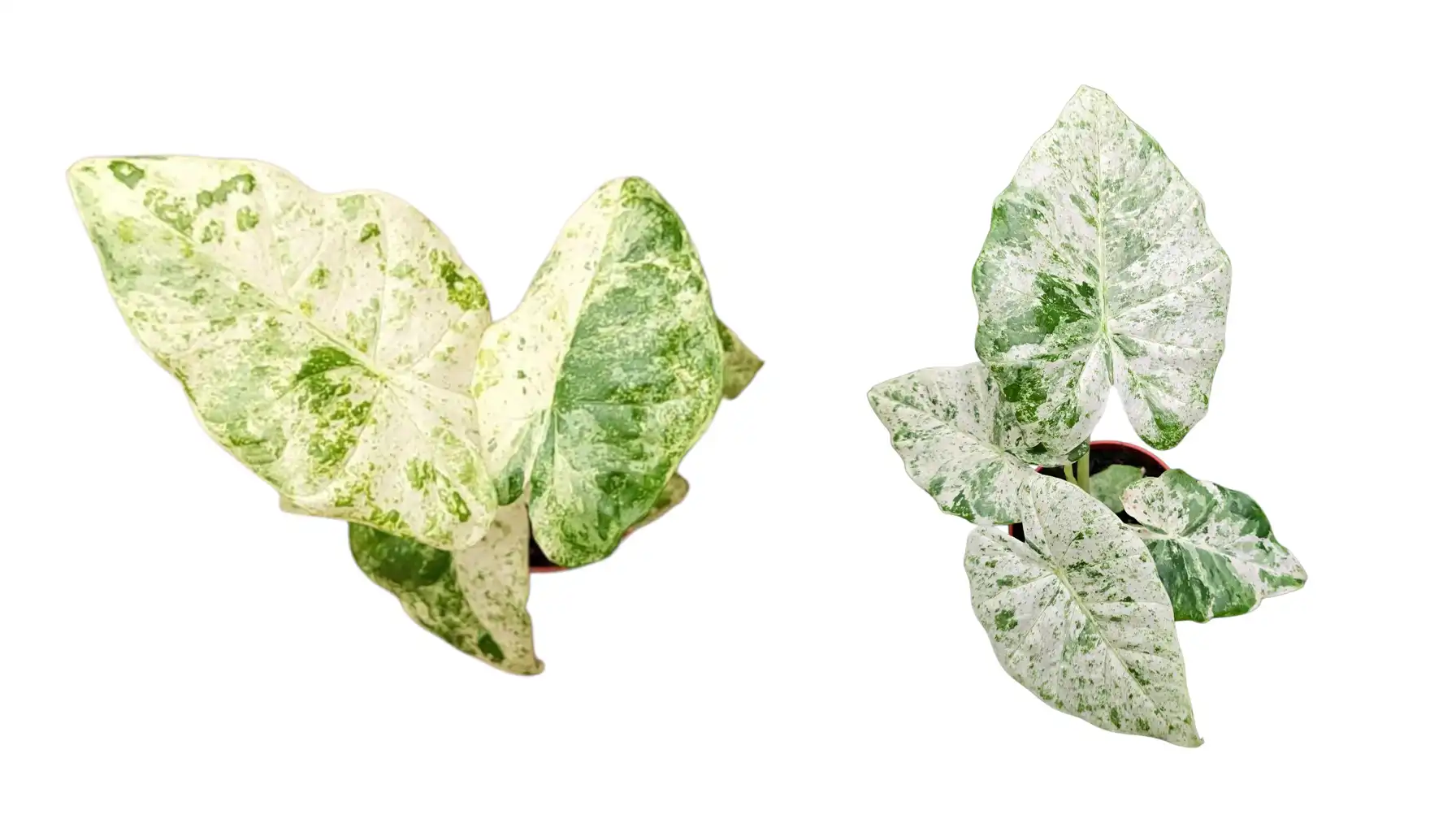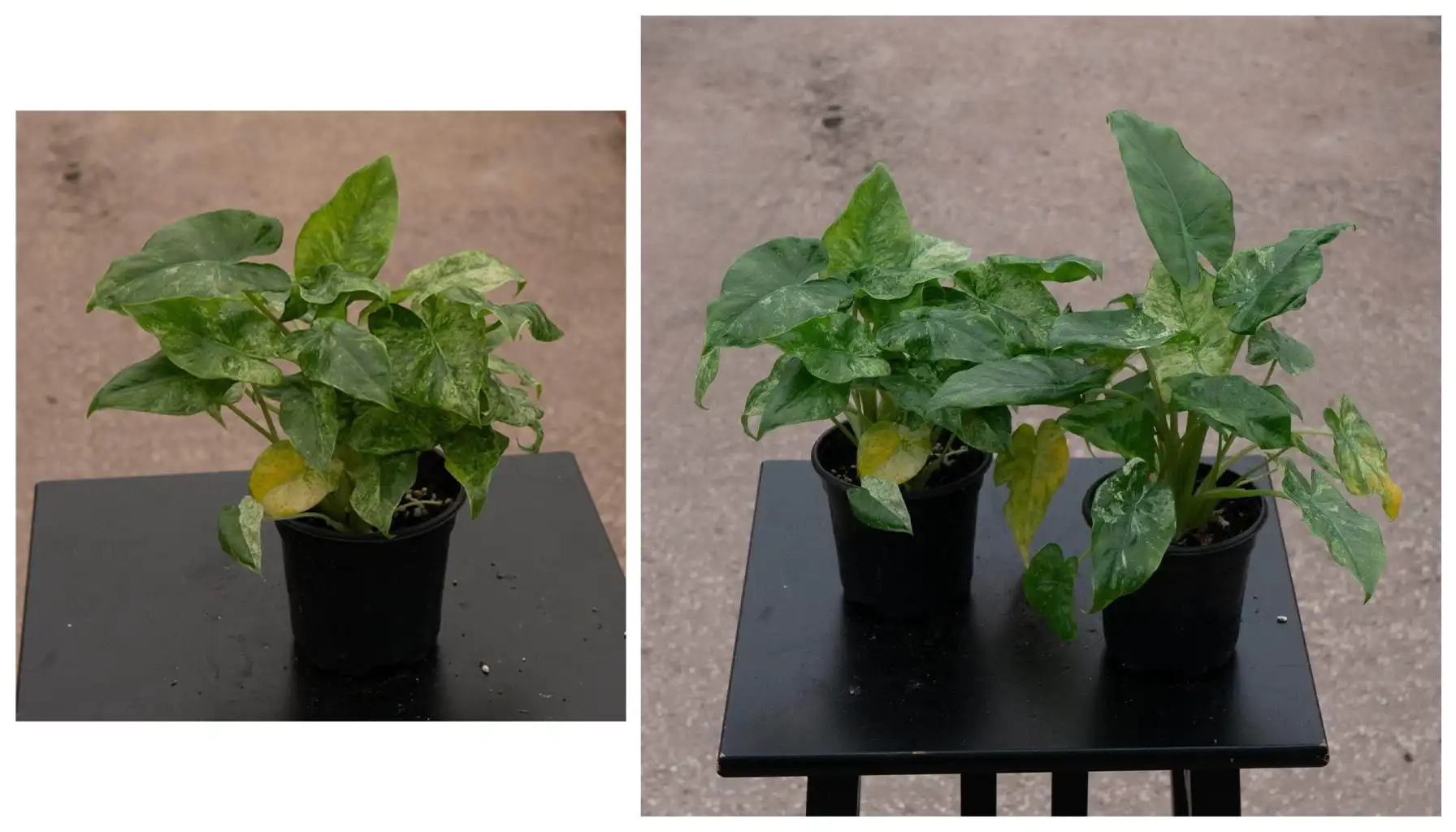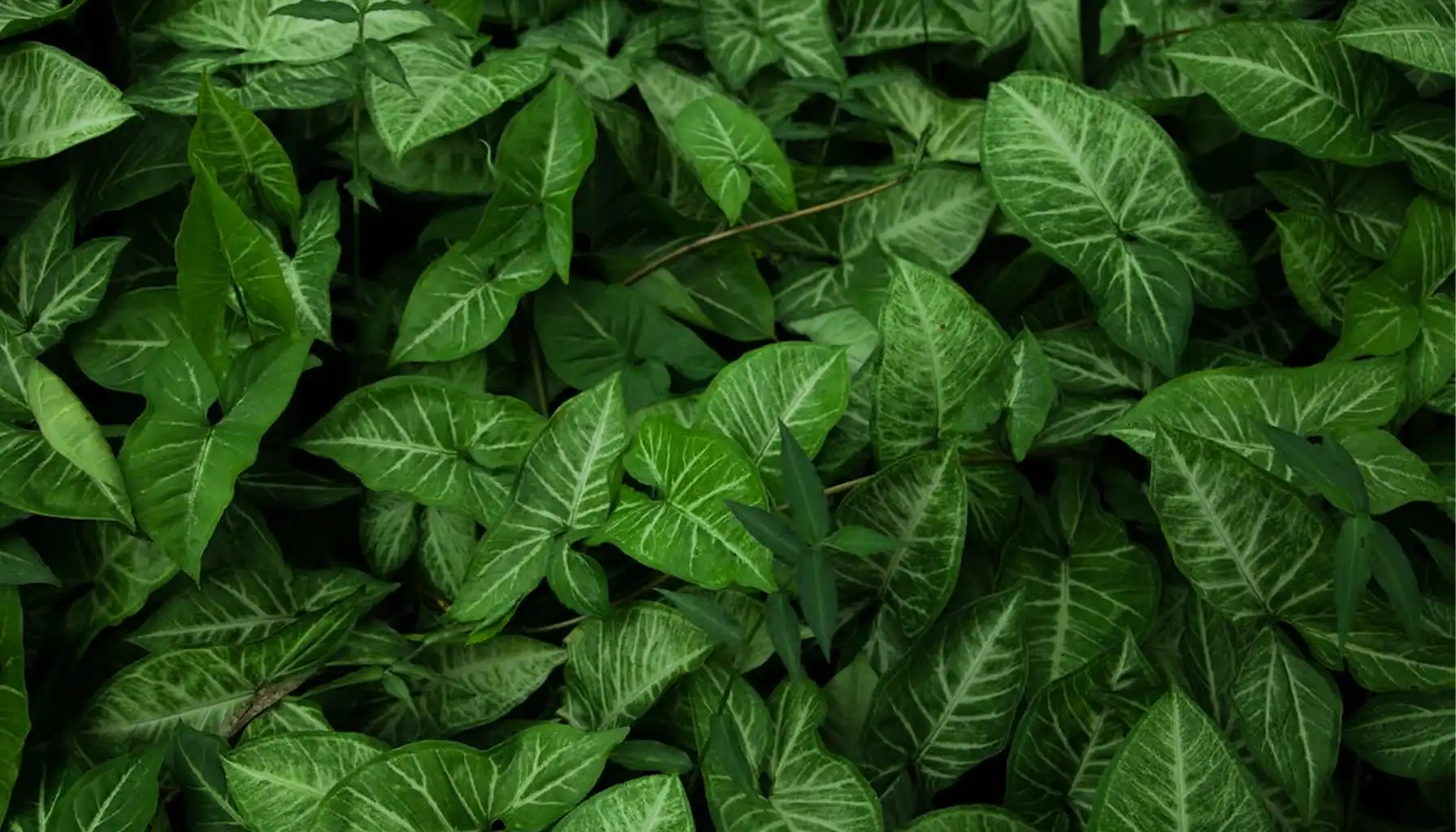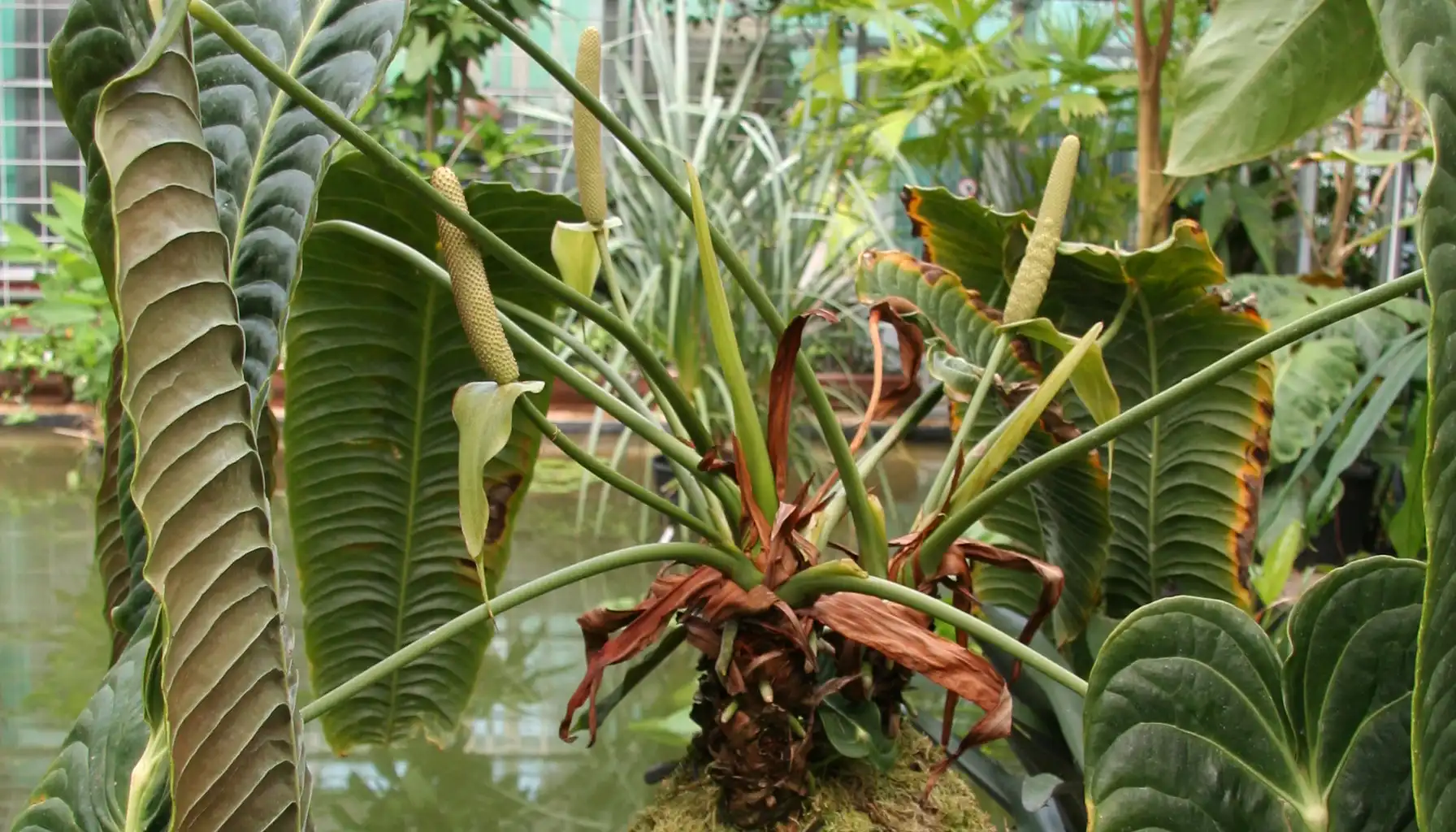If you want to add a tropical plant with spectacular leaves to your home or garden, alocasia odora is your perfect choice. This perennial plant has huge leaves and an exotic appearance.
The plant was named so because its flowers emit a scent at night. "Odora" in Latin means "scented" or "pleasantly smelling." In a broader sense, the "odorous" in the name emphasizes this characteristic feature of the plant, associated with its fragrant inflorescences.
Using the plant identifier, you can easily confirm that you have an odora alocasia in front of you and choose the right care.
Basics of Alocasia Odora Care
Lighting and Placement
Alocasia odora indoor care requires bright but diffused light. Direct sun can burn the broad leaves, so place the plant near an east or west window with a light curtain.
It needs a place with both bright sun and sufficient protection for planting the flower outdoors. This will ensure stable growth due to the absence of irritants, making it a great addition to gardens with easy-to-grow plants.
If you use artificial lighting, choose full-spectrum lamps with an intensity of 3000-5000 lux and a duration of 10-12 hours per day. Place the lamps at a distance of about 30-60 cm above the plant to provide the necessary intensity without burning the leaves.
Make sure the light reaches all the leaves evenly.
Rotate its pot every week.
Avoid placing it in dark places as it needs sufficient light.
Watering and Humidity
Caring for an alocasia odora includes regular watering, taking into account drainage. Water when the top layer of soil (3-5 cm) dries out, about once every 5-7 days in the summer. The water should be soft, well-settled. At least once a day, the leaves are sprayed, the water being sprayed vigorously. The leaves also require regular wiping with a damp cloth.
In winter, reduce the frequency to avoid overwatering. Alocasia odora indoor is sensitive to hard water, so use filtered or settled water.
To maintain humidity at 60-70%, try a tray with pebbles or a humidifier. The plant likes humid air.
Check the soil with your finger or a moisture meter before watering.
Make sure the pot has drainage holes.
Spraying the leaves is not recommended - it can provoke fungus.
Alocasia Odora Varieties
Popular Cultivars
Alocasia odora batik stands out with its unique pattern on the leaves, reminiscent of spots with contrasting veins.
Alocasia odora variegata and alocasia odora batik variegated have light, cream or yellowish areas that add decorativeness.
Alocasia odora aurea attracts golden shades that are better revealed in bright light.
Alocasia odora albo is a rare variety with almost white leaves, requiring special attention to lighting.
Odora batik alocasia: Ideal for accent areas in the garden.
Variegated alocasia odora: Ideal for accent areas in the garden.
Alocasia odora okinawa silver: Silvery leaves with a metallic sheen.
Size and Height
Alocasia odora size is impressive. In natural conditions, this species grows up to 2.5 meters in height. This is a thick-leaved perennial plant with a developed rhizome and short stolons ending in nodules.
Alocasia odora batik mature produces several leaves on strong petioles, reaching 1.5 meters in height. The leaves and petioles are green and covered with a light whitish coating. The lower parts of the petioles are hidden by scaly sheaths.
The shape of the leaf is cordate-sagittate or cordate-ovate, the size reaches up to 130 × 100 cm. The edge of the leaf blade is noticeably wavy. The leaves are dense and leathery to the touch. On each side of the central vein, 9-12 primary lateral ones depart.
Alocasia macrorrhiza odora grows faster outdoors in USDA zones 9–11, where it can become a dominant landscape plant.
Characteristic | Description |
Height | 1.2–2.4 m |
Width | 1.2–1.8 m |
Leaf size | Up to 60 cm in length |
Growth rate | 2–4 leaves per season |
Propagation and Transplantation
Reproduction Techniques
Alocasia odora propagation is done by dividing the rhizomes or alocasia odora bulb. Spring is the best time when the plant comes out of dormancy. Separate the daughter rhizomes with roots, being careful not to damage the main plant. For rooting, place them in a mixture of sphagnum and perlite or in water with the addition of a rooting agent.
Use a sterile tool to separate the rhizomes.
Maintain a temperature of 22–26°C for rapid rooting.
Check the roots after 3–6 weeks before planting in soil.
Plant Transplantation
Alocasia odora plant requires repotting every 1-2 years, when the roots fill the pot. Choose a container 5-7 cm wider than the previous one, with a drainage layer of gravel. Inspect the roots for rot and remove damaged areas. After repotting, keep the plant in partial shade for 7-10 days.
Repot in early spring for quick recovery.
Use fresh soil to replenish nutrients.
Water sparingly after repotting to avoid stress.
Soil and Fertilizers
The Ideal Substrate
Alocasia odora california thrives in loose, organically rich soil with a pH of 5.5–6.5. Mix 40% peat, 30% perlite, and 20% orchid bark, adding 10% compost for nutrition. This ensures drainage and moisture retention, which is important for the plant’s large, agave-like roots.
Component | Percentage | Function |
Peat | 40% | Retains moisture |
Perlite | 30% | Improves drainage |
Orchid bark | 20% | Provides aeration |
Compost | 10% | Nourishes root |
Plant Fertilizing
For alocasia odora batik care, use a liquid fertilizer with NPK 10-10-10 or a slow-release granular fertilizer every 3-4 weeks in spring and summer. Stop feeding in the fall, when the plant slows down its growth. For variegated varieties, alocasia odora variegata care routine should consist of micronutrients (magnesium, iron) for bright leaves.
Dilute the fertilizer to 50% concentration.
Apply to damp soil to avoid burning.
Rinse the soil every 3 months to remove salts.
Problems and Their Solutions
Common Problems
Alocasia odora batik and other varieties can suffer from improper care. Here's how to recognize and fix:
Yellow leaves: Not enough light or overwatering. Increase light or check drainage.
Brown spots: Sunburn or low humidity. Move to shade and increase humidity.
Drooping leaves: Not enough water or cold. Water regularly and keep at 65–80°F (18–27°C).
Pests
Spider mites, aphids, and mealybugs may attack alocasia odora okinawa. Wash the leaves with warm water and soap or use neem oil once a week until the pests are gone. Prevention includes regular inspection and maintaining humidity.
Remove damaged leaves to stop the spread.
Use sticky traps to control small insects.
Ensure good ventilation to avoid stagnant air.
Toxicity
Alocasia odora scientific name is Alocasia odora, and like all Araceae, it is toxic due to calcium oxalate.Keep out of reach of children and pets. May cause skin irritation or digestive problems if any part is swallowed.
Features and Benefits
Bloom
Alocasia odora flower is a rare indoor plant, but in the garden it can produce peach or white spatha-shaped flowers. They are not as decorative as the leaves and are often cut back to avoid wasting energy. Alocasia snow odora batik sometimes flowers more frequently due to its strong root system.
Advantages
Alocasia odora benefits include not only aesthetics, but also the ability to purify the air of toxins such as formaldehyde. A tropical vibe might be induced in the interior or garden by this plant, especially when accentuated with night blooming flowers.
Using Alocasia Odora in the Interior
Decorative Application
Alocasia odora 'batik' and other varieties are perfect for creating a tropical accent in your home.
With its contrasting patterns, Alocasia snow odora batik looks especially impressive in minimalist spaces with neutral tones. Place the plant in a ceramic pot on a stand to emphasize its height and shape.
Use planters with a glossy finish for a modern look.
Combine with low-growing plants.
Place against a wall or in a corner to create visual depth.
For smaller spaces, choose compact varieties like alocasia odora batik and place them on a coffee table or shelf. In larger rooms, alocasia odora can serve as a space divider, especially near windows where the light highlights the texture of the leaves. Avoid tight spaces to allow the leaves to grow freely.
How to Decorate Your Garden with Alocasia Adora
Alocasia is a great plant for creating a tropical corner in the garden or on the terrace. Its textured leaves and expressive appearance can become a focal point among other plants.
Grouping with other tropical plants: Combine alocasia with other exotic plants, creating a mini exotic island in a landscaped garden. where each element supports the overall concept.
Stone and wooden compositions: Alocasia will look perfect among natural materials. Place plants next to stones or wooden structures to emphasize the organic style. This will create the atmosphere of a tropical paradise.
Use in aquarium gardens: If you want to create a unique garden, saturated with water elements, plant next to a waterfall and a pond. Such plants look good against the background of water and stones, adding exoticism to the garden landscape.
Tropical accent in the garden: By placing the plant against the background of green shrubs or grass, you will ensure that it stands out with its texture and color, it will combine well with palm trees and bushes with large leaves, creating the effect of a small jungle.
Related AI Plant Finder Posts
